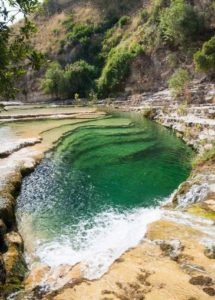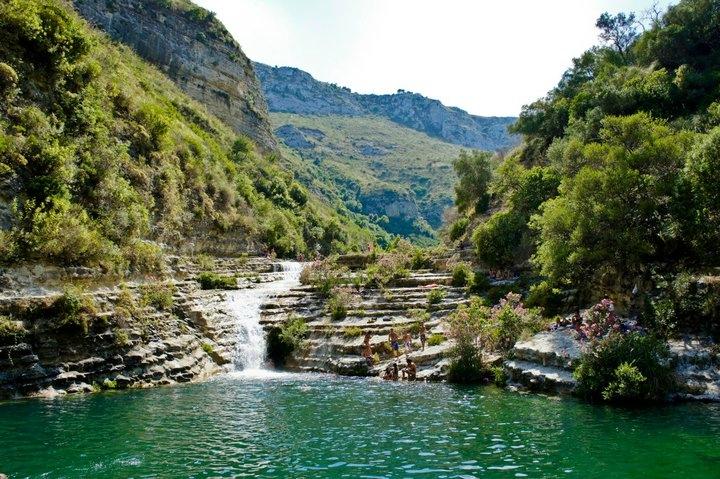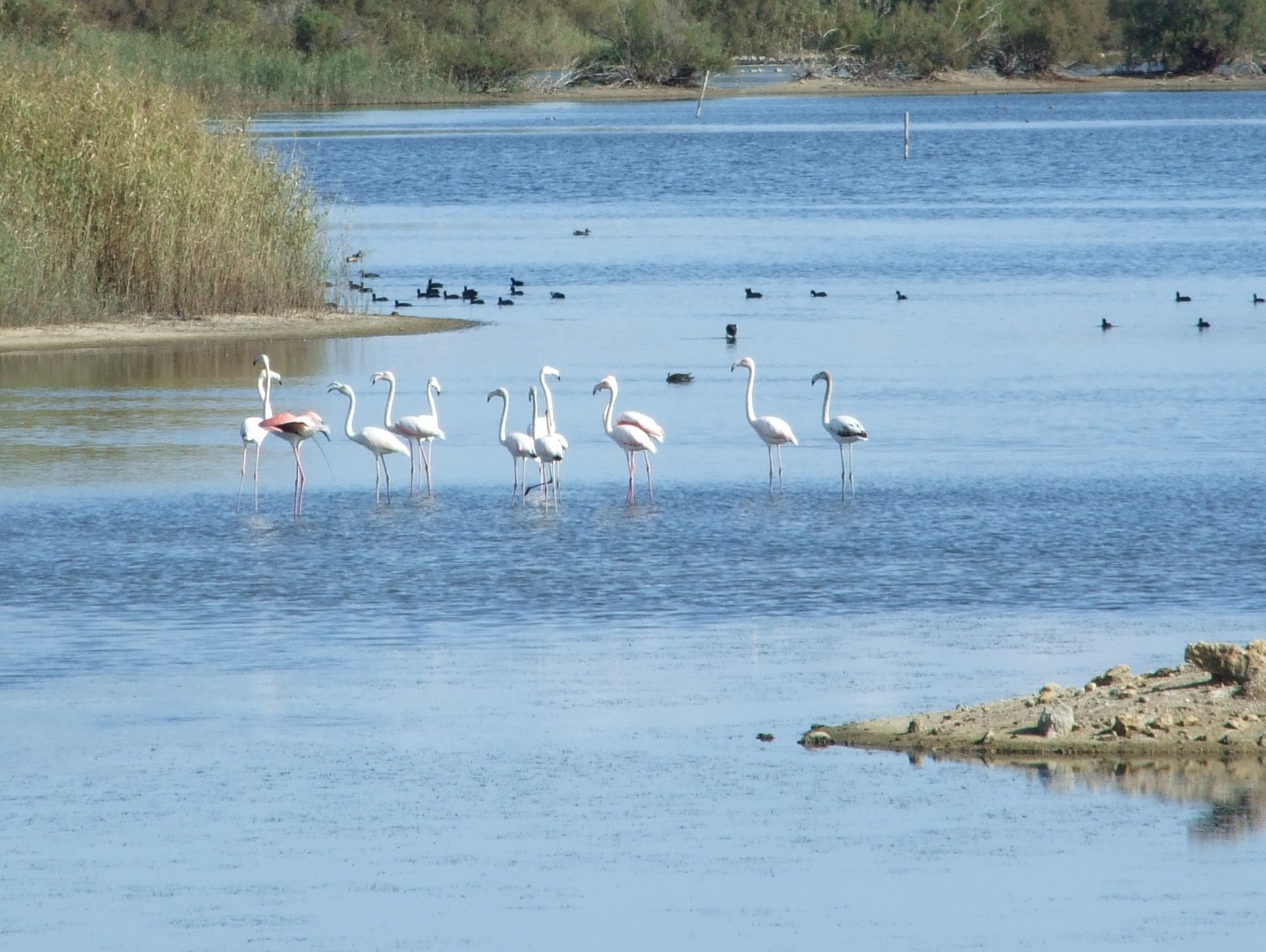La région de Syracuse est riche en réserves naturelles.
Cavagrande est l’une des régions les plus belles et les plus caractéristiques de Syracuse. Les vastes plates-formes karstiques des monts Iblei caractérisent le paysage de la pointe sud-est de la Sicile, à cheval sur les provinces de Ragusa et Syracuse. C’est surtout dans cette dernière que la plate-forme prend des aspects spectaculaires en raison de la présence de fractures profondes, appelées “carrières”, qui creusent les bords. Ce sont des canyons produits par l’érosion des cours d’eau qui coulent encore sur leur fond, parfois avec un aspect superbe comme dans le cas de la Cavagrande du Cassibile, l’un des plus majestueux et suggestifs, maintenant protégé comme réserve naturelle, était à l’époque paléolithique le site des établissements habités. Dans les murs il y a huit mille tombes rupestres en forme de grottes datant des Xe et IXe siècles av JC.
La Réserve Naturelle Cavagrande du Cassibile couvre une superficie d’environ 2.760 hectares dans les municipalités d’Avola, Noto et Syracuse. Elle a été créée en 1990 avec le but de protéger la végétation naturelle et de restaurer la forêt méditerranéenne ainsi que de défendre et augmenter la faune méditerranéenne.
Le territoire protégé comprend un parcours d’environ 10 km de la Cassibile, l’une des rivières les plus importantes du sud-est de la Sicile, qui s’enfonce fortement entre les rochers de la plate-forme d’Ibleo et génère un canyon, profond en certains endroits à plus de 250 mètres des parois abruptes à la végétation dense.

Dans le territoire de la municipalité d’Avola (une charmante ville de la province de Syracuse), comme un diamant serti dans un bijou, il y a un petit paradis sur terre, un patrimoine naturel (historique et archéologique) de valeur incommensurable :
La Réserve naturelle orientée “Cava Grande del fiume Cassibile”. Une vallée, presque un canyon, où même les plus sécularisés, en visitant la réserve naturelle, retrouvent le goût de contempler les merveilles de la nature : flore (platane, saule, laurier-rose, lierre, fougère, etc.),
La faune (libellules, papillons colorés, boucles, renards, casquettes, coucous, crécerelles, etc,)
Les aspects géomorphologiques (nids-de-poule géants, lacs magnifiques, “marie”) et archéologiques (village byzantin, nécropole casbile, “Grottes des brigands”).
Il existe de nombreux sentiers qui permettent d’accéder à la réserve, vous permettant de visiter n’importe quel point de la vallée, de “Manghisi” à l’embouchure de la rivière. Et il y en a pour tous les goûts : pour les amateurs de promenades insouciantes à l’ombre d’un bosquet et pour ceux qui aiment les randonnées plus dures et plus difficiles, pour les amoureux du fond de la vallée et du paysage de montagne, pour les amoureux de la nature et de l’archéologie.
Prisa – Timpa ca Tona
Dans cet itinéraire le randonneur a la possibilité de découvrir et d’admirer un lieu très suggestif, peu connu et qui n’a rien à envier aux célèbres lacs : “Timpa ca tona” (pierre qui fait écho). Le paysage se présente dans toute sa splendeur : un vaste plateau rocheux, un beau lac d’eau d’un vert cristallin, connu sous le nom de “uruvu tunnu” (lac rond), une végétation luxuriante, et une sorte de libellules parmi les plus belles et colorées d’Italie, qui en ce lieu semblent avoir implanté leur royaume, à admirer en glissant entre un oléandre et un autre. Suite à l’incendie de vastes proportions qui s’est produit le 25 juin 2014 et qui a détruit de nombreux hectares de végétation rendant les chemins dangereux, l’Azienda Foreste Demaniali, en tant que gestionnaire du Parc Naturel, a jugé opportun d’assurer la sécurité de ses usagers, fermer les chemins touchés directement ou indirectement par l’incendie : Scala Cruci, Scala di Mastra Ronna et Sentiero di Mezza Costa dans la section allant de Carrubella au Bassin collecteur ENEL.
Le seul sentier officiellement accessible est le sentier naturel “Prisa-Carrubella”, ou simplement “Carrubella”. Chaque jour, des milliers de touristes qui se rendent dans la réserve et qui ne connaissent pas l’Ordonnance de la Garde forestier, ils trouvent un accès fermé au sentier principal (Scala Cruci), mais la plupart du temps personne ne les avertit de l’existence du chemin mentionné ci-dessus et ouvert au public : le sentier Carrubella.
Avec la réalisation de cette page dans l’intérêt de la réserve elle-même et de l’image globale du territoire, nous, en tant qu’association naturaliste, appelée précisément “Cavagrande del Cassibile”, nous voulons combler, à notre manière, les graves lacunes qui découragent souvent les touristes de visiter les beautés du sud-est de la Sicile.
Comment accéder au sentier Carrubella
En arrivant à Avola, province de Syracuse, prendre la route provinciale n.4 Avola-Manghisi en suivant les indications pour Cavagrande del Cassibile (lacs). Sur une longueur d’environ 10 km, la route se déroule dans des virages qui montent dans les collines d’Avola Antica. Une fois que vous avez grimpé la colline, après avoir passé une résidence de villas, après environ 3 km vous atteignez la jonction qui mène au chemin principal, nommé Scala Cruci. Au carrefour, au lieu de tourner à droite, parce que vous n’arriveriez qu’au sentier principal fermé, continuez tout droit sur la route provinciale pendant encore 1300 mètres, puis tournez à droite au panneau touristique bien visible.
Un petit chemin de terre nous mène près du début du sentier de randonnée. Si vous avez de la chance, vous trouverez un parking public gratuit (il y en a très peu) sinon vous pouvez vous garer dans un parking payant géré par un concessionnaire.
http://www.cavagrandedelcassibile.it/foto_prisa_timpa_ca_tona/Prisa2.gif
L’itinéraire du trekking
En sortant de la voiture continuez vers l’arrière-pays en passant devant une exploitation agricole, un peu plus loin nous arrivons à un carrefour : sur la droite nous voyons un panneau et une cabane en bois, la cabane d’accueil du garde forestier.
Si vous voulez faire un petit tour sur le sentier de la Carrubella, prenez à droite et descendez progressivement dans le canyon. Ceux qui veulent faire le tour complet du sentier, à la bifurcation, continueront tout droit pendant encore 5-600 mètres, au bout d’un portail en bois et un panneau indique que nous sommes au début de la descente dans le canyon. Un escalier creusé dans la roche nous permettra en quelques centaines de mètres d’atteindre le niveau de la rivière, juste à l’endroit où au début du siècle dernier a été construit le barrage qui transportait une partie de l’eau de la rivière dans un aqueduc qui actionnait les turbines d’une centrale hydroélectrique située à la fin du canyon.
Le sentier serpente toujours à droite de la rivière à travers de beaux paysages pour la plupart à l’ombre des chênes, saules, chênes, chênes, aubépines, poires sauvages, lauriers roses, platanes orientaux ainsi qu’une végétation dense et luxuriante riparienne. Profitez de ce tronçon et ne soyez pas pressés d’aller au lac, surtout vous qui aimez la nature et vous n’êtes pas venus pour vous baigner dans les eaux fraîches de la Cassibile.
Après environ 15-20-25 minutes de marche vous arrivez à un carrefour : à droite commence la longue sortie du canyon et nous irons à gauche vers une source et le “Uruvu tunnu”. A quelques mètres et ouvre devant nous un scénario unique, le royaume des libellules colorées, une vaste plates-forme rocheuse où se trouvent les “marmite du diable ou marmite de géant”, dont celle du tunnu Uruvu, le rond lac où vous devez prendre un bain régénérateur et rafraichissant.
Quand vous décidez de retourner à votre voiture, retournez à la bifurcation et continuez à grimper le sentier qui vous mènera progressivement à la sortie, vers le refuge forestier situé à la bifurcation dont nous avons parlé plus tôt. Comme mentionné précédemment, théoriquement, ceux qui veulent juste atteindre le lac, au lieu de contourner le lac en passant par le barrage et les bois, peuvent descendre dans le canyon directement d’ici et remonter par la même route.
Conseils utiles
1. Porter des chaussures de randonnée ou de tennis (AVERTISSEMENT, vous ne pouvez pas entrer avec des chaussures ouvertes) ;
2. Le chemin est accessible de 8h00 à 19h00 ;
3. Il est obligatoire avoir de l’eau à boire (et, pourquoi pas, des sels minéraux) ;
4. Il est interdit d’amener des chiens même en laisse ou autres animaux de compagnie (art. 2 lett. n du règlement) ;
5. La route n’est as recommandée pour les personnes souffrant d’asthme, d’allergies respiratoires, cardiaques, d’allergies et les femmes enceintes ;
6. En cas de pluie, la réserve reste fermée pendant environ 2-3 jours ;
7. Dans la réserve, il n’y a pas de réseau de téléphonie mobile (les téléphones mobiles n’ont pas de la connexion) ;
8. Il est conseillé de descendre aux heures les plus fraîches (jusqu’à 9h00) et de remonter après 17h00 ;


